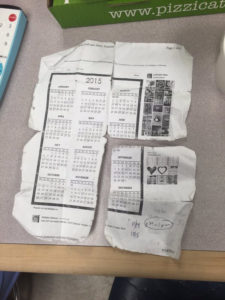 Nurse schedulers have a higher percentage of migraines than any other industry. While I have no peer-reviewed evidence of that statement, it’s not hard to imagine when you look at the daunting task assigned to them. Creating a perfect schedule for your nursing department is like cooking a buffet for one hundred people, each with their own set of food allergies. Schedulers are required to collect everyone’s preferences and assign and balance the schedule based on those preferences, all while taking into account FTE status, seniority, hours scheduled, meetings, education days, and about ten or twenty other factors.
Nurse schedulers have a higher percentage of migraines than any other industry. While I have no peer-reviewed evidence of that statement, it’s not hard to imagine when you look at the daunting task assigned to them. Creating a perfect schedule for your nursing department is like cooking a buffet for one hundred people, each with their own set of food allergies. Schedulers are required to collect everyone’s preferences and assign and balance the schedule based on those preferences, all while taking into account FTE status, seniority, hours scheduled, meetings, education days, and about ten or twenty other factors.
Collecting staff preferences and availability is simple in theory, but difficult in practice. Years ago as a new nurse, I was tasked with creating the schedule for our night shift nurses, a team of about twelve. With such tiny numbers, you’d assume I had it easy; but the process was still time-consuming and manual. In the end, people gave me their preferences via email, paper, and I think a crumpled up napkin at one point. Then I, like many others, built an Excel spreadsheet to help me manage the process. But it wasn’t exactly an intuitive delight to use—and for larger departments, it’s even more labor-intensive.
Some nursing departments are equipped with self-scheduling technology that records their staff’s preferred shifts. Staff members are asked to place some random code in the box next to the date they want (like an “n” or a parenthesis) to submit their requests for various shift types. Nurses consistently report that these systems are unintuitive and frustrating, which leads to poor adoption rates. The systems are also resource-intensive on the scheduler side, often leaving holes that require more follow-up and information gathering. The alternative is a white board, paper print out, emails, or a stack of napkins—hopefully, for your sake, not all of the above.
Once preferences are gathered and consolidated, assigning shifts and balancing the schedule is where the real work begins. Nurse schedulers are tasked with staffing each shift up to the core assigned by the CFO, sometimes (or, as is increasingly the case, often) without enough staff to do it. Schedulers must ensure that everyone is working their appropriate weekends and getting their appropriate hours based on FTE status, while making tough decisions about who to move off or onto a day. Once you think you have it right, you realize that you scheduled Jenny for six twelve-hour shifts in a row and moved George onto his son’s birthday, a day he specifically requested off. Moving one of those shifts is like removing a Jenga piece, and your whole beautiful schedule comes crashing down. Back to the napkins.
The pressures of accounting for one hundred nurses’ preferences—including one-off birthdays and visits from the in-laws—can be overwhelming, and can take already limited time away from patient care and staff engagement priorities. Even when you do finally finish that schedule, print it out, and post it, the fun isn’t over. First, most departments don’t have a modern way to distribute the schedule to staff along with new events and shift changes as they happen; that means the manager or scheduler has to rely on staff accurately entering their schedules into their phone or preferred calendar from one line on what is often (or at least resembles) a complex Excel spreadsheet. Second, you inevitably see a handful of shifts that are not staffed up to core because, well, the resources just aren’t there. That begins a whole separate cycle of filling those open shifts so you don’t end up short-staffed for a future day—and again having no easy way to make sure staff always has an easily accessible up-to-date schedule as things change.
Starting to understand why nurse schedulers take so much Excedrin Migraine? Let’s just be happy they aren’t on Protonix yet for a stomach ulcer from schedule-induced stress!

Find out How Nursegrid Can Benefit Your Department
